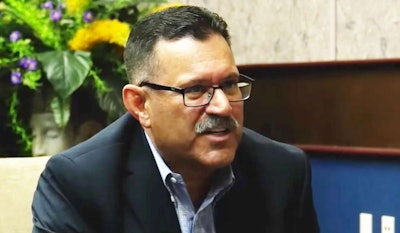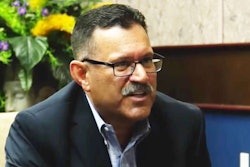 Ray Martinez
Ray MartinezRay Martinez, administrator of the Federal Motor Carrier Safety Administration, says he hopes to kick off dialogue on tweaking hours of service regulations in the coming months, particularly around allowing greater flexibility for drivers to split their 10-hour off-duty period into segments and, potentially, reevaluating the 30-minute break requirement set in 2013.
In an exclusive interview with Overdrive on Tuesday, Martinez talked hours of service, the industry’s transition to electronic logging devices, the sticky nature of detention time and how he hopes to reshape the agency’s relationship with the industry it regulates.
“I’d like to be able to say a year from now that the industry has noted a difference in posture from the previous three years or five years from this agency. That we are more receptive to new ideas. That we listen better. That we’re more cooperative with industry and trying to work together to make the roadways safer,” he said.
Relative to hours, Martinez said in his conversations with drivers and carriers in his six months on the job that a key word continues to arise: flexibility. “That’s what I keep hearing — ‘we need some flexibility,’” he said. “I’m hoping in the next few months we can move forward with some thoughts about how that might make sense. I think it’s worth revisiting the existing hours of service and looking at providing greater flexibility.”

The 30-minute break, which is required within a driver’s first eight hours on duty, is an often-criticized component of hours regs, Martinez said. “That’s one area across the board we’ve heard complaints about. Why wouldn’t we look at that?”
“The other issue is to revisit the issue of split sleeper to say what kind of flexibility can be added there?”
Martinez noted the industry is still in a transitional phase with implementation of the ELD mandate, with drivers, carriers and enforcers still adjusting to the change. “By and large I am pleased with the way this is rolling out, and we will continue to listen to drivers and carriers and work with them to be flexible where we can. I see this as not closing the door on the ELD issue. It’s something we’re working through to make sure everybody gets used to using them over the coming year.”
The devices also could be a step toward holding shippers and receivers accountable for long detention times, he said. Acknowledging that the agency doesn’t exactly have regulatory authority over shippers and consignees, Martinez says ELDs should “bring to the fore … what a significant issue that is.”
While he said he understands there’s disagreement over whether the “driver shortage” is a reality or not, Martinez said inefficiencies in the supply chain caused by detention exacerbate the issue. “How can you have a driver shortage and have detention times that go into the hours,” he said. “That’s a terribly inefficient use of a valuable resource.”
Movement on CSA Safety Measurement System reform
FMCSA is planning a “robust listening session” for the fall to address reforms to the agency’s Compliance, Safety, Accountability program, Martinez said. The date has not yet been set, but Martinez said he hopes to glean as much input as possible from industry stakeholders to help address the future of the safety program. The agency is in the midst of reforming the program based on recommendations from the National Academies of Science, who last year recommended sweeping changes to the carrier rating program. The agency announced last month it would begin testing a new scoring system this fall.
Martinez encouraged participation in the listening session, as well as other chances to provide the agency with feedback. “We’re not going to progress without robust industry participation,” he said. “We can take criticism, constructive criticism. That’s good; that’s the way this is supposed to work. But if we move forward with proposals that you agree with, what I would ask is that you voice your support when we do that. If you like it, don’t assume it’s going to get done. These are put out as proposals and they’ll never get done unless there is support from the regulated community.”
Moving the needle on crashes writ large
In his term as FMCSA Administrator, Martinez said he hopes to see truck and bus crashes — and fatalities and injuries stemming from those crashes — start to trend downward again. “The last few years they have been on the rise. I don’t have to tell people in this industry who drive for a living that the landscape out there is dangerous, in large part because of bad driving behaviors by passenger vehicles. I’m hoping that — certainly in the three years that I’m here, and hopefully longer — that we will see a better integration of new technologies that will help crash prevention. I would hope to see safety numbers moving in the right direction.”










